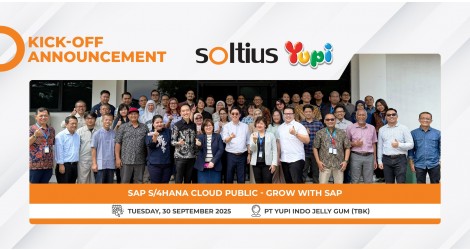What Next for Retail ? Navigating Your Business from Now into the Future

Retail is changing at such a rapid pace it’s hard to imagine what the future may hold. As a retailer, you not only are challenged to offer the products your customers want today, but to do so profitably while providing optimal customer service and staying one step ahead of your competitors — remaining agile enough to address whatever lies ahead.
Evolving omnichannel customer preferences and demands have ignited change among retailers, now working to deliver exceptional customer experience regardless of the channel. New strategies, procedures, and tools are being deployed, but retailers still have work to do to reach their business goals. The following eBook outlines Where Retail Is Today, Where Retailers Need To Be, How Retailers Can Get To Where They Need To Be, and the role of technology in accelerating your progress to help you become a “retailer of the future” today.
Where Retail Is Today
Over the past few decades, technology has enabled the rise of eCommerce. Although shoppers complete most transactions in brick-and-mortar stores1, customers have grown to expect the same personalized, relevant, convenient, and easy-to-use experiences they encounter online when they shop in-store. To be successful today, retailers must optimize their businesses across all channels, as well as continually meet and exceed consumer expectations
Retail businesses continue to face challenges in these areas:
Omnichannel: Channel lines are blurring, but most retailers with multiple channels still do not provide a consistent experience across channels. As a result, consumers can become frustrated that shopping in physical locations does not result in the same experience as shopping online. In many cases, there is a lack of personalization, ease-of-use, and convenience in the brick-and-mortar shopping experience.
Inventory Visibility and Order Fulfillment: Managing inventory across multiple channels can be a formidable challenge — and a costly one. “Safety stock” to ensure various channels are adequately supplied can equal 60% of the total retail stock pool and significantly increase carrying costs.2 Inventory visibility across all channels, which could help retailers reduce safety stock, shrinkage, and associated costs is lacking in many businesses. It can also benefit order fulfillment, where weaknesses are often spotlighted during the high-demand holiday shopping season. Improving the in-store collection process is another goal for retailers; iVend Retail research revealed 25% of consumers3 believe the process needs improvement.
Mobility: According to global research and advisory firm IHL Group, retailers are realizing significant ROI from mobile point of sale (mPOS) solutions — some as much as a 25% increase in sales4 — and 78% of retailers are planning to make a new mobile POS decision by mid-2016. In many cases, however, retailers are not using mobility to its fullest potential, primarily focusing on mobility for payment transaction and line busting. Retailers may be overlooking the ability to leverage mPOS to provide shoppers with product or promotion information, as well as giving associates the ability to reference customer information to help engage them in-store.
New and Emerging Payment Technology: The transition to EMV chip card payment technology in the U.S. continues. Most tier 1 retailers have implemented EMV, but many more retailers have not. The Strawhecker Group reported only 37% of U.S. merchants5 had migrated to EMV as of February 2016. This research was conducted about four months after the liability shift when issuers no longer automatically assumed liability for fraudulent payment card transactions — the party with the least EMV-compliant technology now assumes liability for fraudulent charges. As retailers upgrade their payment technology to accept EMV cards, many are viewing this as an opportunity to consider additional technology upgrades, such as adding near field communication (NFC) technology to enable acceptance of mobile wallets such as Apple Pay, Samsung Pay, and Android Pay.
How Retailers Can Get Where They Need to Be
You may identify more with the “Where Retail is Now” category rather than “Where Retailers Need to Be,” or maybe you would categorize yourself as somewhere in between. Regardless of your progress, technology can help take your organization to the next level.
Retail POS System : Imagine your retail POS system as the nerve center of your business. POS software solutions are designed to facilitate your particular type of business operation or micro-vertical. In addition, an array
of hardware options are available that are engineered for the rigors of a retail environment and provide options for considerations such as connectivity and limited counter space. By automating processes such as labor scheduling, inventory management, and reporting, you can save time — and money — by using an integrated retail POS system.
eCommerce Platform : eCommerce platforms give you the ability to build storefronts on various channels as well as managing inventory, promotions, and personalization, enabling search, and controlling pricing. eCommerce platforms aren’t just for online retailing; they help you provide a consistent customer experience across all channels.
Rather than disparate systems, select a solution that integrates with your brick-and-mortar store systems. You can manage your operations, payment transactions, enterprise resource planning (ERP) and other back office applications, and data analytics and reporting tools from one system. Leveraging these tools can help you cut costs. For example, SAP finds ERPs can decrease administrative and operational costs by more than 15%.7
Mobile POS : Mobile POS solutions let you take POS system functionality anywhere your sales associates need it in the store. Look for rugged tablets purpose-built for retail environments. You can also choose from different operating systems to suit your applications, as well as features and peripherals that best suit your stores.
Wireless Network: A wireless infrastructure enables your mobile devices to communicate with your POS system, as well as providing Wi-Fi to enable customers to connect.
Payment Technology: Payment solutions enable you to accept various payment types securely. Consider emerging technologies such as near field communication NFC, which enables retailers to accept payments from mobile wallets such as Apple Pay, Samsung Pay, and Android Pay.
Loyalty Programs: A loyalty program solution, whether integrated or standalone, helps you engage customers with rewards and special offers. Loyalty 360 reports more than half of retailers attribute 20% of their total revenue to their loyalty programs.
Data Analytics Programs: Data analytics tools help you leverage all the data you are collecting from your POS, mPOS, online sales, loyalty program, customers’ mobile devices, and other sources and generate reports in formats that make it easy for you to track metrics, see trends, and gain important insights to help make business decisions that can help your bottom line. For example, consulting firm Boston Retail Partners report when retailers collect insights from loyalty programs to refine pricing, promotions, and marketing, they see a 4% to 7% increase in profits.9
What Does Your Retail Plan Look Like
For The Future?
If you’re reading this report, chances are you’re somewhere on the road towards the time when you can be considered a retailer of the future. Although, getting there from here may seem beyond what you can accomplish with in-house resources.
Your retail technology provider can be a great asset to your business. As a trusted advisor, your retail technology provider can work with you to develop a plan to deploy technology in a way that suits your business goals, creates minimal disruption to your operations, and suits your budget. Your retail technology provider also can provide advice on the best ways to leverage technology to differentiate your business, improve customer engagement, and operate more efficiently and cost effectively.
In a time of rapid change, to do nothing often means you fall behind. Technology can help you vault ahead of your competitors and achieve a “future” version of your business today. Why wait?
Other News


